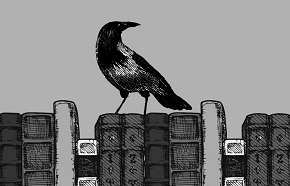Books
The Appeal of Classic Crime
There is something comforting about slipping back in time to an earlier age even if you are dealing with the gruesome subject of murder.
Take as example Sherlock Holmes, whose analytical methods of detection still manage to captivate us despite first appearing in A Study in Scarlet way back in 1887. Skip forwards a few years and you have Agatha Christie’s creations Hercule Poirot (who first appeared in 1920 in The Mysterious Affair at Styles) and Miss Jane Marple (1927 in The Thirteen Problems). If I were to mention these names to the average reader I suspect most would have heard of them and some would have read them. Hopefully you have too – but they are just the tip of the detective-iceberg. My personal favourite is Gladys Mitchell’s hawkish, beady-eyed, widowed Mrs Bradley, the star of over 60 novels whose techniques include a combination of polymathic psychoanalysis and blunt, carefree questioning.
In the 1930s a group of British mystery writers began meeting for dinners and advising each other on their writing. They called themselves the Detection Club. Still going today, members have included the aforementioned Gladys Mitchell, as well as Agatha Christie, Dorothy L. Sayers and even A. A. Milne – creator of Winnie the Pooh – who wrote one crime novel, The Red House Mystery. It’s reported that they had an oath drawn up by Sayers:
Do you promise that your detectives shall well and truly detect the crimes presented to them using those wits which it may please you to bestow upon them and not placing reliance on nor making use of Divine Revelation, Feminine Intuition, Mumbo Jumbo, Jiggery-Pokery, Coincidence, or Act of God?
The club even had a good set of ‘fair-play’ guidelines – ten commandments for detective fiction – which Ronald Knox believed set works apart from ‘shockers’, and they are quite interesting:
Knox’s “Ten Commandments” (or “Decalogue”)
1. The criminal must be mentioned in the early part of the story, but must not be anyone whose thoughts the reader has been allowed to know.
2. All supernatural or preternatural agencies are ruled out as a matter of course.
3. Not more than one secret room or passage is allowable.
4. No hitherto undiscovered poisons may be used, nor any appliance which will need a long scientific explanation at the end.
5. No Chinaman must figure in the story.
6. No accident must ever help the detective, nor must he ever have an unaccountable intuition which proves to be right.
7. The detective himself must not commit the crime.
8. The detective is bound to declare any clues which he may discover.
9. The “sidekick” of the detective, the Watson, must not conceal from the reader any thoughts which pass through his mind: his intelligence must be slightly, but very slightly, below that of the average reader.
10. Twin brothers, and doubles generally, must not appear unless we have been duly prepared for them.
These guidelines really do embody the spirit of classic crime, and you can see them applied both consciously and unconsciously in lots of stories in the genre. As part of the joy of classic crime is that feeling that you’re just one or two steps away from solving the mystery yourself, I think number six is particularly important. For the reader, the conclusion should always remain just out of reach until the very end.
There is something safe and neat about classic crime novels that makes them comforting. Close communities allow for small circles of suspects, who are examined in turn as momentum builds and we finally arrive at the big reveal. The mystery is solved, order is restored and justice is often served – though I’ve witnessed Mrs Bradley and Poirot using their discretion rather than invoking the law, making us question what it is to be moral.
And who doesn’t like the thought of a stay at a country house turning into a real life murder mystery weekend? Assuming you’re not the victim, of course.
If you’re looking to explore the wonderful world of classic crime, the Detection Club’s roster of luminaries provides an ideal starting place to discover what the genre has to offer. In addition to those authors mentioned above, I’d also recommend checking out include Margery Allingham, Edmund Crispin, and Ngaio Marsh too.
Find out more about the Detection Club:



Please note: Moderation is enabled and may delay your comment being posted. There is no need to resubmit your comment. By posting a comment you are agreeing to the website Terms of Use.